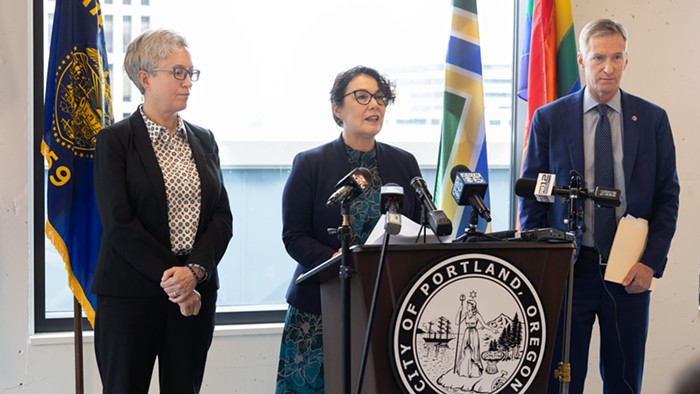
That's 32 more than the year before, and the total of 2013 and 2014 combined. And it's yet another sign Portland's homelessness crisis is taking a toll beyond the perennial focuses of messy camps or inconvenient panhandlers.
The 2015 death toll comes from the county's yearly "Domicile Unknown" report, in which health officials suss out medical examiner investigations where a deceased person was either known to be homeless or didn't have a home officials could find. The county's been doing these reports since 2011, and this is by far the highest number it found. Despite a one-year improvement in 2013, there's been an average of 16 percent increase in the number of people who die homeless in Multnomah County since 2011.

"Many of the deaths were preventable; others were decades premature," the new report says. "For most, access to housing, mental and physical health care and substance abuse services would have likely made a difference."
As always, the report delves into the demographics and causes behind the deaths. Exactly half involved substance abuse, for instance. A quarter were brought on by opioid use, as the city and country grapple with a heroin epidemic.
Most people were discovered in outdoor public spaces, more than half of the deaths were classified as "accidental," and in a year when shootings at or near homeless camps spurred media frenzies, just one more person died via homicide than in 2014.
Also: 17 women died on the streets, a 325 percent increase from four in 2014.
"The numbers in this report are staggering," Multnomah Count Chair Deborah Kafoury writes in an introduction (she's been calling the death toll "unacceptable" since 2011, when 47 people died).
One new facet of this year's report: The county has a map showing, by zip code, where the most deaths occurred. Unsurprisingly, the area containing Old Town/Chinatown was a hotspot. So was the 97220 zip code, which extends along a wide stretch of the Columbia River, but also extends between NE 82nd and 122nd north of Burnside.

This year's report also offers the stories of three of the 88 people who died without homes this year. They include a 32 year old who had difficulty shaking an opioid addiction after being prescribed pain pills in his late 20s, and an Oregon State University graduate who struggled with schizophrenia and poor vision.
Give the full report a read.


















